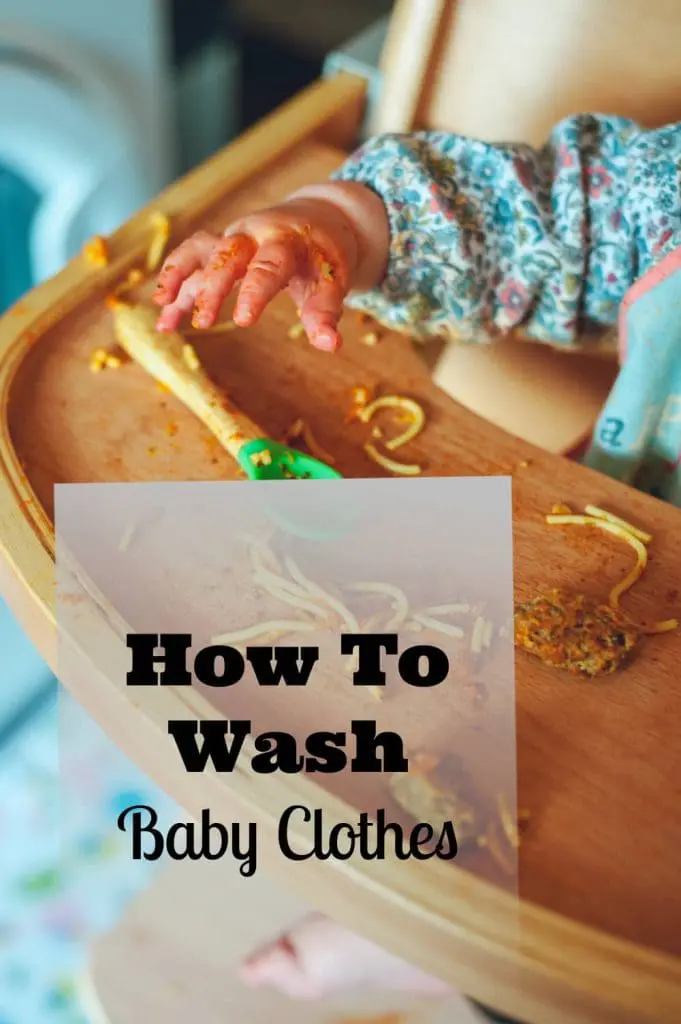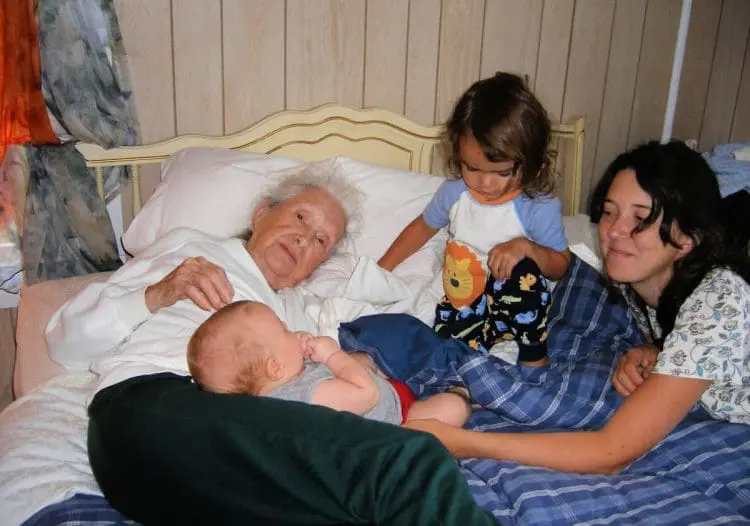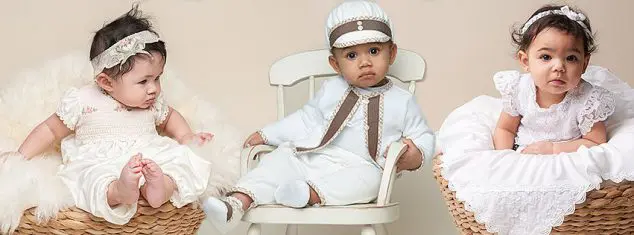You may have heard a lot of should’s and should not’s about how it’s important to wash your newborn baby’s clothes before wearing for the first time and only use special detergent for baby’s sensitive skin. When it comes to the proper care and cleaning of baby clothes, some things boil down to personal preference. These are baby clothing care tips that I have used that work for me to make doing baby laundry a little simpler. This article will cover a few baby laundry essentials, tips, and answers to common questions. Worried about germs and odors lingering on your baby’s clothes? We’ve got you covered with these essential tips. Discover the secrets to keeping baby clothes fresh, clean, and free from bacteria. Say goodbye to funky smells and hello to a healthier, happier baby.
How To Wash Baby Clothes And Answers To Your Laundry Questions
Are you drowning in a never-ending pile of baby clothes? It’s time to take control and conquer that laundry mountain once and for all. In this article, we’ve compiled the ultimate guide to organizing and washing your little one’s garments, so you can streamline your laundry routine and reclaim your sanity. From sorting strategies to stain removal techniques, we’ve got all the expert tips and tricks you need. So, get ready to bid farewell to chaos and hello to a simpler, more efficient way of keeping your baby’s clothes clean and tidy.
Photo Credit: Handmade christening gown christening gown supplier christeninggowns.com.
Pro Tip: Before You Buy Baby Clothing, Check Care Tips
Generally, it’s a good idea to read the garment care label instructions even before buying baby clothes. Baby clothes get washed a LOT, because spit up, diaper accidents, etc. happen quite frequently. Except for a few special occasion items (such as a christening gown), it’s nice to have clothes that hold up under the wear and tear of everyday living and don’t require a lot of special care. If you are going to preserve keepsake clothing, have it dry-cleaned soon after the event to prevent stains from settling in.
What To Wash Baby Clothes With: Choose a Baby Safe Laundry Detergent
By selecting a detergent specifically designed for baby clothes, you can ensure that your little one’s garments are not only clean but also safe and gentle on their delicate skin. As babies have sensitive skin that is easily irritated, it’s important to choose a detergent that is hypoallergenic and free from harsh chemicals or fragrances. Look for detergents that are specifically labeled as “baby” or “gentle” to ensure that they are suitable for your baby’s clothes.
When browsing for baby detergents, keep an eye out for those that are free from dyes and perfumes. These additives can be harsh on a baby’s skin and may cause irritation or allergies. Opting for a fragrance-free detergent is a wise choice, as it eliminates the risk of any potential skin reactions.
Here’s where the debate gets a little more lively; do you need a special detergent in order to protect baby’s sensitive skin? Well, it’s an option. However, many moms have found that they can wash baby clothes in with everyone else’s and baby will be just fine. Consider, though, that if you or other members of your family have sensitive skin, baby may as well, and a dye-free, scent-free detergent is a good choice in that case. It has been said that liquid detergent is a better option than soap flakes, because soap flakes don’t rinse out as well, and they can also affect the flame-retardant properties of sleepers.
Which detergent is best for baby clothes?
Choosing the best baby laundry detergent is a matter of opinion but everyone can agree that it should be the safest baby detergent. So you are looking for a natural, mild detergent that will be gentle on baby’s sensitive skin but will be tough on stains. By general consensus, Dreft is one of the best know baby detergents. If you are looking for a more natural alternative, you might want to try Babyganics 3X Baby Laundry Detergent which is dermatologist tested and has plant-based cleaning power. My affiliate link.
Establish a Laundry Routine To Wash Baby Clothes
A consistent routine will help ensure that your baby always has clean clothes available without feeling overwhelmed by the never-ending laundry pile. Start by designating specific days for doing laundry. Whether you choose to tackle it all in one day or spread it out over a few days, find a schedule that works best for your lifestyle. Some parents prefer doing smaller loads every day, while others find it more convenient to set aside one or two days exclusively for laundry. Experiment with different approaches until you find the routine that suits you.
Next, consider the logistics of your laundry routine. Determine the best time of day to start the washing process, taking into account your baby’s nap schedule and other daily activities. You may find it helpful to start a load first thing in the morning so that it’s ready to be transferred to the dryer by midday. Alternatively, you might prefer to start laundry in the evening, allowing you to fold and put away clothes while winding down for the night.

Pre-Treat Stains
Babies have a knack for creating all sorts of stains on their clothes, from formula dribbles to colorful puree smears. Pre-treating stains is an essential step to ensure that your baby’s clothes come out of the wash looking fresh and stain-free.
Diaper blowouts can be a disaster, but with the right pre-treatment, you can salvage even the most soiled onesies. Start by removing any solid waste from the clothing and rinsing it under cold water. Then, apply a stain remover or liquid laundry detergent directly to the affected area, using a soft brush to work it into the fabric. Let the pre-treatment solution sit for at least 15 minutes before tossing the garment into the wash.
Spit-up stains are a common occurrence for new parents, but they don’t have to be a permanent fixture on your little one’s clothes. Begin by blotting up any excess spit-up with a clean cloth or paper towel. Next, mix a solution of equal parts white vinegar and water and gently dab it onto the stain. Leave the solution on the stain for a few minutes before rinsing it with cold water.
For those mysterious unidentifiable spots, a general pre-treatment approach can work wonders. Mix a paste of baking soda and water and apply it to the stain, gently rubbing it in with your fingers. Allow the paste to sit on the stain for about 30 minutes before rinsing it off with cold water. Or spray with baby-safe stain remover and let sit.
Best Stain Remover For Baby Clothes
I’ve come across quite a few different tried-and-true methods for treating stains, but there were a few things that came up pretty consistently. First, treat stains while fresh, if possible. No brainer, right? Even using a baby wipe to get some of the stuff off right away can help. However, life happens, and laundry doesn’t always get done right away. For stains that are more entrenched, pre-treat stains before washing. Some options are an Oxi-Clean Baby soak or treating with Dreft before scrubbing with an electric toothbrush. The Puracy spray is nice and easy and very effective as well. My affiliate link.
You may want to take a look at these HealthyChildren.org important laundry room safety tips.
Washing Machine Settings
Consider the load size when loading the washing machine. It’s best to wash baby clothes in smaller loads to ensure proper cleaning and prevent tangling or snagging. Overloading the machine can lead to ineffective cleaning, and your little one’s clothes may not come out as fresh as you’d like.
Another important aspect to pay attention to is the water temperature. When it comes to washing baby clothes, most experts recommend using the warm water setting. Warm water helps to effectively remove stains and dirt without being too harsh on the delicate fabrics. However, always double-check the care labels as some garments may require cold water instead.
Sort by Size and Type
Once your baby clothing has been washed and dried, it is an important step in organizing them to sort by size and type. This simple method will not only make it easier for you to find what you need when dressing your little one, but it will also help you extend the life of their clothes.
Start by creating separate piles for each size of clothing. Whether you use bins, drawers, or shelves, having a designated space for each size will save you time and frustration when you’re searching for an outfit. As your baby grows, you can easily shift the clothes from one pile to the next, keeping everything in order.
Within each size category, further sort the clothes by type. You can have separate sections for onesies, pajamas, tops, bottoms, and special occasion outfits. This will make it even easier to locate a specific item when you’re in a hurry or faced with a messy diaper situation.
Sorting by size and type not only saves you time when it comes to finding clothes, but it also ensures that you are utilizing everything you have. You won’t accidentally miss out on using a cute outfit because it was hidden in the back of a drawer or buried under a pile of other clothes. Additionally, this sorting method can help you identify items that your baby has outgrown or that need to be replaced. As you go through the clothes, you can easily spot the ones that no longer fit and set them aside for donation or to be passed on to another family.

Baby Laundry Tips Q&A
Do babies need special laundry detergent?
Not necessarily. However, it is important to use a very mild, fragrance-free detergent. If you don’t want to use baby safe detergent for the whole family, then you should wash your baby clothing separately.
How often do you do baby laundry?
There is no hard and fast rule on this. However, baby’s can go through a surprising number of baby blankets and outfits in a day if their diaper leaks or if they spit up. You will likely have a load every 2-3 days and at least once a week. It is better not to wait more than a few days for the most part because many of the clothing items may have milky spit up that will grow nasty quickly.
Can I wash baby clothes in washing machine?
Certainly! Well, this really goes back to the first tip I gave about checking labels. If you are buying the right things you can! However, specialty keepsake clothing will likely not be safe in the washing machine.
Can I wash all baby clothes together?
- Consider putting small items like socks in a mesh laundry bag to keep them together.
- Fasten Velcro straps on baby bibs and cloth diapers to keep them from snagging other clothing.
- Wash cloth diapers separately so you can give them an extra rinse cycle.
Conclusion
Organizing and washing baby clothes doesn’t have to be a never-ending battle. By following the expert tips outlined in this guide on how to wash baby clothes, you can transform your laundry routine from chaos to calm, allowing you to spend more precious moments with your little one. Establish a regular laundry routine, promptly pre-treat stains, choose the right detergent, and mind your washing machine settings. When it comes to folding, sort by size and category. Start implementing these strategies today and enjoy the satisfaction of a streamlined laundry process.
Laundry is one of those chores that needs to be done almost every day, especially with a baby in the house. As a result, many of us probably count a washing machine as a blessing in our lives and are grateful for any tip that makes this job a little easier. I hope these baby laundry essentials and tips are helpful to you. What do you do to make your laundry life simpler?
Related Posts:


Robin (Masshole Mommy) says
Putting the socks into a mesh bag when doing load of laundry is a great idea for new parents. I lost so many of my boys socks when they were babies by not doing that.
Regina Ryerson says
Thanks for this helpful article with tips for washing baby clothing!
An effective, safer, greener alternative to baby stain remover: Make a paste from baking soda and pure castile soap. (I use Dr. Bronner’s.) It works great on even tough stains!
Shey Smith says
It will always be good to use baby-specific detergent for baby’s clothes. Me, I don’t use fabric softner because the smells are quite irritating for baby skin. A newborn’s clothes just don’t need it.